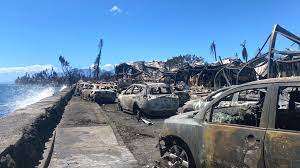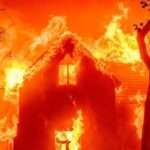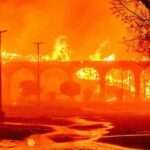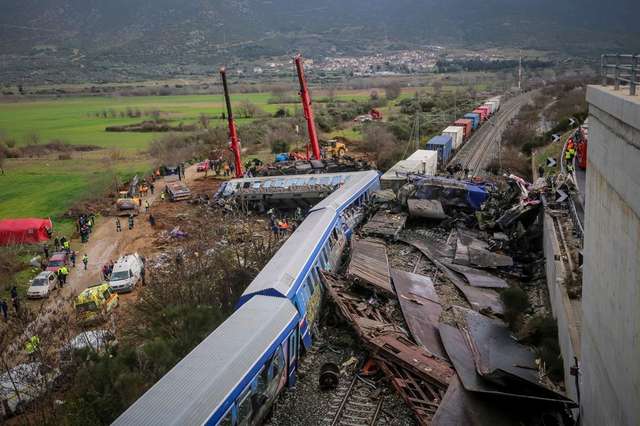
As Maui’s police department named the first five victims of last weeks wildfires, the death toll was put at 111, but with still around 1,000 missing, that figure is sadly bound to increase many times over.
It is likely to take several more days, even weeks before authorities can place a near accurate figure for the number who have lost their lives, but two residents of Lahaina – the town worst hit – were announced as being amongst the dead and they were Robert Dyckman, 74, and 79-year-old Buddy Jantoc. These were followed by confirmation that Melva Benjamin, 71, Virginia Dofa, 90 and Alfredo Galinato, 79, were also killed in the fires.
It is inevitable that more bodies will be recovered as currently only just over 27% of the affected area has been searched for human remains. It is estimated that 80% of Lahaina, which has approximately 12,000 residents and was once Hawaii’s royal capital, was completely destroyed by fire.
The massive wildfire tore downhill through dry brush and grass and engulfed much of the island’s western edge, driven by strong winds from Hurricane Dora, which helped fan the flames. Maui itself was also under a red flag alert – meaning warm temperatures, very low humidities and stronger winds were expected to combine to produce an increased risk of fire danger – even before the fires broke out.
Cadaver sniffer dogs, specially trained to detect bodies have been deployed to search for more victims under the rubble. The animals are able to move through debris without causing further destruction and can use their keen sense of smell to detect human remains, apparently even those that have been burnt to ashes that would be difficult to detect with the naked eye.
The deadly fire is still burning in places, but according to Maui County officials, it is now about 85% contained.
Residents received no warning
Maui lies in between Hawaii’s big island and the main tourist island of Oahu. On the 8 August residents in Lahaina woke up to find their power was out, meaning that phones hadn’t charged, alarm clocks stayed quiet and air conditioners shut down.
Many put this outage down to the after-effects of Hurricane Dora which had passed dangerously close by, but were reasured by officials who had declared that early bush fires had been 100% contained.
Too late to act
Consequently, locals were given no indication that there was any prospect of the fires reigniting and the fact that there are 80 outdoor sirens, which are tested monthly, for the purpose of warning people of tsunamis and other natural disasters, did not go off, they justifiably felt that they had no cause for real concern.
By the time smoke alarms began to sound simultaneously on the second largest island in the Hawaiian archipelago, it was already too late for many. Embers had already begun igniting the brush around their homes and the fires raced through the town.
Thousands of buildings destroyed
An investigation is now under way led by Hawaii’s attorney general. The unofficial line is that the blaze may simply have moved too quickly for any formal response, and firefighters have been praised for their actions against what was essentially a fire hurricane, which travelled one mile every minute. In excess of 2,200 buildings were razed to the ground, reduced to molten metal and ash.
Shocking claim made
It is being said that recovery crews combing through charred homes and vehicles are highly likely to find between 10 and 20 more victims per day over the coming week or so. Governor Josh Green explained that the number of missing now stands at around 1,000 – down from 2,000 at the very start – but added that identifying remains will in lots of cases be very difficult.
President holding off visit
US President Joe Biden was keen to travel to Hawaii, but said he will refrain from doing so at present so as not to divert resources and attention from the humanitarian response. He said: “I don’t want to get in the way. I’ve been to too many disaster areas in the past and I want to be sure we don’t disrupt ongoing recovery efforts.”
He did however promise that “all available federal assets” in the region would be used, including the US military and Coast Guard.
Identifying victims will be incredibly difficult
Victim identification specialists say that putting names to the rest of those who perished in Maui could take months, or even years because of the condition that many of the remains are likely to be found in.
Daniele Podini, an associate professor of forensic molecular biology at George Washington University, said: “Finding the right samples, identifying relatives, creating a database for all the relatives of the missing and then comparing the results from samples to that database… It’s a combination of everything.”
Chris Milroy, a professor of pathology and laboratory medicine at the University of Ottawa agreed, saying: “The high temperatures may have destroyed some victims’ fingerprints and the same may be the case for dental records or any documentation that would allow investigators to match a person with a medical device, such as a hip replacement or pacemaker, or for items from which DNA samples can be taken.”
He went on to point out: “You need people you can compare it to, but even then, you could also have something like brothers who died and whilst you’ll be able to say that they’re related, unfortunately you won’t be able to say which brother is which, unless you have other circumstantial evidence.”
Situations arising from other disastrous events prove what problems are ahead
Looking at two other horrific events where identification became almost impossible shows what difficulties lie ahead for investigators.
After the terrible 2017 incident in London where the 24-storey residential Grenfell Tower was ravaged by fire and completely guttered, it took about five months for investigations to conclusively identify all 72 victims. Once visible remains were removed from the scene, investigators had to use small towels and mesh sieves to find smaller and harder-to-identify pieces of human remains.
In the United States, more than 20 years on from the sickening 9/11 World Trade Center attacks of 2001, body fragments are still being identified and sadly the remains of about 40% of those killed are still unidentified.
Three deadly ingredients
The wildfires themselves flourish with the assistance of a deadly three ingredients, those being: fuel in the form of biomass like vegetation or trees, a spark, and weather such as winds that drive the flames.
Scientists have spotted that some parts of the Hawaiian islands are covered with non-native grasses that are more flammable than native plants. In the region of 14% of the state is suffering from severe or moderate drought, according to the US Drought Monitor, whilst 80% of Hawaii is classed as abnormally dry.
The “perfect storm”
It has been calculated that 90% of all of Hawaii is receiving less rainfall than a century ago, but in the period of the last fifteen years it is even worse than that. Wildfires were once uncommon in across the islands and occurred mainly as a result of volcanic eruptions or lightning strikes. However, climate change coupled with human activity has made them more common and extreme.
It all added up to what effectively was the “perfect storm” for the devastation which shot across Maui and it can only be hoped that important lessons have been learned, but for many individuals that will sadly come too late.






0 Comments